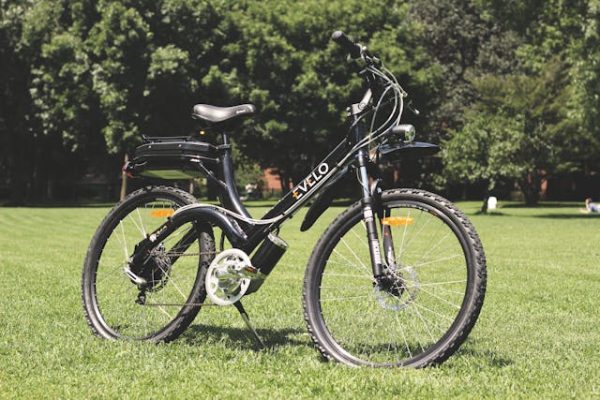Riding an electric bike offers convenience, environmental benefits, and a sense of adventure. However, protecting your e-bike is essential. With their growing popularity, understanding insurance coverage for electric bikes becomes important. Riders may encounter issues such as theft or accidents, making adequate coverage crucial for financial security and peace of mind. Here’s what to know when exploring e-bike insurance options.
Understanding E-Bike Insurance Basics
Before exploring specific coverage options, it’s essential to understand the fundamentals of e-bike insurance. Unlike traditional bicycle policies, e-bike insurance often includes features designed for their higher costs and advanced components. Their electric motors and batteries typically require tailored coverage that reflects their value and unique risks.
Many insurers offer policies distinct from standard bicycle insurance. To ensure you’re getting the best e-bike insurance, make sure your plan covers key electric bike features, including the battery and motor, to avoid gaps in protection. Carefully reviewing available policies helps you identify the coverage necessary for your needs, offering financial security in case of theft, damage, or other incidents.
Selecting the right insurance for electric bikes involves evaluating key coverage types and exploring additional features that offer comprehensive protection. Being aware of the coverage types that exist and the situations they may cover is critical to making an educated decision in choosing the best e-bike insurance for your specific use case.

Liability Coverage
Liability coverage protects you if you cause injury or damage to someone or their property while riding your e-bike. Statistically, a cyclist is a lot more likely to be cited in a car-bicycle collision. Unfortunately, you do not have to be wrong to get sued, and when you are, it is your responsibility to defend yourself. This coverage protects you from financial exposure due to liability by proving a legal defense if you are ever named in a lawsuit. With the increasing popularity of e-bikes on the roads, accidents are a real possibility and can sometimes lead to significant consequences.
Choosing a policy with sufficient liability coverage is essential. Carefully review the policy limits to ensure they match your riding habits, and the specific risks associated with e-bike use in your area.
Uninsured Motorist
This coverage is critical for bike commuters and anyone who spends time on public roads alongside cars. It works just like the Uninsured Motorist coverage on conventional auto insurance and covers medical and related expenses if the rider is involved in an accident with an uninsured or underinsured motorist.
Property Coverage
Property coverage protects your e-bike against theft or damage. Given the high value of many electric bikes, this type of coverage is essential. Some policies may cover repairs following an accident, while others focus on theft or total loss.
Ensure the policy covers your bike’s declared value, which is the price you paid for the bike; some bike insurance companies also allow you to add the price of all accessories into this number. Many bike insurance companies cover bikes for their Actual Cash Value (ACV), which represents what the item is worth at the time of the loss, rather than what it would cost to replace it with a brand-new version. In the eyes of insurance companies, bikes depreciate at roughly 20% per year, so if your three-year-old bike is stolen, you’ll receive roughly half of what you’ve paid for it. Policies offering replacement cost coverage guarantee you can replace your bike with a similar model if it’s stolen or irreparably damaged.
Comprehensive Coverage
Comprehensive coverage protects against damages caused by non-riding-related events, such as vandalism or natural disasters. If you often park your e-bike in public or outdoor spaces, this type of coverage is worth considering.
This coverage can help you avoid significant repair or replacement costs from unexpected incidents. Some policies may also include protection for accessories like bike locks or GPS systems. Features such as roadside assistance will send someone to pick you up in case of a breakdown that immobilizes your e-bike, such as a broken chain or a flat tire.
Roadside Assistance
E-bikes can occasionally encounter issues like mechanical failures or flat tires. To address such challenges, many insurers offer roadside assistance designed for cyclists. This service may include towing, basic repairs, or transport to your home or a safe location. Running out of battery charge may or may not be covered, so make sure to ask the company before assuming that it is.
Including roadside assistance in your policy can be particularly helpful for longer rides or daily commutes. Be sure to check the details of the service, such as coverage limits and availability, to confirm it aligns with your needs.
Personal Injury Protection
Personal injury protection helps cover medical expenses if you’re injured while riding your e-bike, regardless of fault. This coverage often includes costs for medical bills, rehabilitation, and lost wages due to injuries.
With more cyclists on the road, personal injury protection is a crucial part of e-bike insurance. It safeguards your health and finances, ensuring you’re prepared for potential risks. Prioritizing this coverage can provide valuable support in the event of an accident.

Evaluating Premium Costs and Discounts
Insurance premiums for e-bikes can vary depending on factors such as coverage levels, your riding history, and where you live. Consider the following tips when comparing policies:
· Compare Quotes – Obtain quotes from multiple insurers to understand the average cost of e-bike insurance. Comparing options helps you find a policy that fits your budget while meeting your protection needs. Online tools and comparison platforms can simplify this process, making it easier to identify the most cost-effective option.
· Look for Discounts – Many insurers offer discounts that can lower your premium. For example, bundling e-bike insurance with home or auto policies often results in reduced rates. Some providers also reward safe riding records or offer discounts for membership in cycling organizations or clubs. Take the time to ask about available discounts. Identifying these opportunities can help you secure an affordable policy without compromising coverage.
Understanding Policy Terms and Conditions
After narrowing down your options, it’s crucial to carefully review the terms and conditions of each policy. This step ensures you’re fully aware of the coverage details and any potential limitations. Focus on these critical elements:
· Deductibles – Deductibles are the out-of-pocket costs you must pay before your insurance takes effect. Lower deductibles usually mean higher premiums, while higher deductibles can reduce monthly payments. Evaluate these options to find a balance that aligns with your budget and riding habits.
· Policy Limits – Policy limits define the maximum amount your insurer will pay for a claim. Ensure these limits adequately cover the value of your e-bike and any related costs. Reviewing this detail helps you understand what to expect if you need to make a claim.
· Exclusions – Pay attention to policy exclusions, which outline what isn’t covered. This may include certain activities, locations, or specific types of damage. Knowing these exclusions helps you identify any gaps in coverage and plan accordingly to reduce risks while riding.
Maximizing Your E-Bike Insurance Benefits
Choosing the right insurance for your e-bike is vital for protecting your investment and ensuring peace of mind while riding. Understanding the available coverage options, evaluating additional features, and assessing your needs will help you secure a policy that suits your lifestyle.
A well-chosen policy provides more than financial protection. It lets you enjoy your rides with confidence. Whether commuting through urban streets or exploring scenic paths, robust insurance coverage ensures you can focus on the journey rather than worrying about potential mishaps.
As e-bikes become increasingly popular, comprehensive insurance is no longer optional; it’s a crucial part of responsible ownership. Consider factors like your riding habits, environment, and the value of your e-bike when selecting coverage. Thorough research will help you identify the best policy to meet your needs.
By prioritizing proper insurance, you can fully embrace the freedom and enjoyment of riding, knowing you’re protected against theft, accidents, and other risks. With the right coverage in place, your e-biking experience will be safer, more secure, and entirely worry-free.


